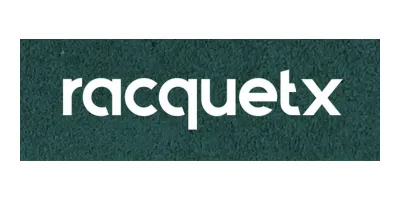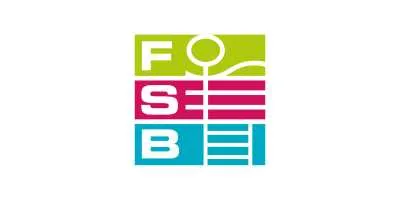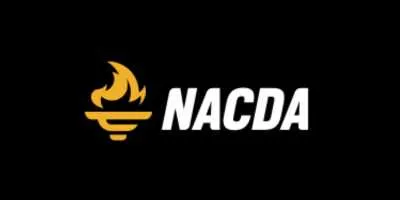Home » Running track » How to Resurface or Repair a Worn-Out Running Track?

Running tracks are some of the most-used sports facilities, especially at schools. From the track team to gym class to community running groups that use the track before and after school hours, people are always putting the miles on your track.
If your running track is in need of resurfacing or repair, we recommend you to try our running track resurfacing cost calculator to get an idea of how much your project would cost. We can also hook you up with some of the leading athletics track building companies in the US.
Questions to Ask Yourself When Considering a Running Track Resurfacing Project
Running tracks need periodic repairing and resurfacing to keep them safe and competitive. There are a few key questions you should ask when deciding if this is the right time to get the work done, and the extent of the project.
The opening questions are the same ones you or your predecessor asked when the track was being built: what, and who, do we need it for? Is this the home track of a powerhouse team that hosts several major meets each year, or is it mostly there for recreational use by students and community members? Do people expect it to be reasonably comfortable for some light fitness-oriented running, or do they show up ready to set a PR?
These questions may require a deeper examination if your intended project is not just a repair but an upgrade. Maybe your school’s track team has been advancing under a new coach and is ready to make a few steps up in the T&F world. Or perhaps the athletics department wants to host district championships for a few years before embarking on a major capital improvement project with the goal of hosting a state meet.
The larger the scope of work, the greater the cost in time and money. The project may be constrained by budget or the amount of available time to do the repairs (resurfacing an entire track takes 6-8 weeks).
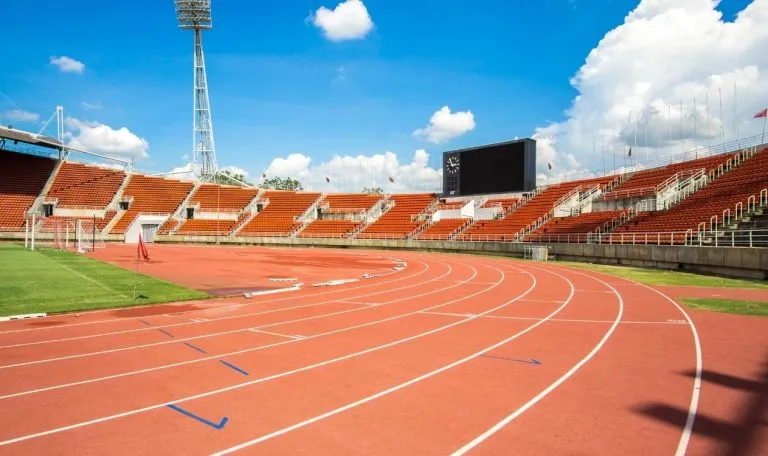
How Damaged Is the Running Track?
Part of a repair project is knowing what you want the track to look like when you’re done. Another part if knowing what state it’s in now.
You can get a good idea simply by walking the track. Is the track scuffed in a few places, like at the start line of the sprints? Or are there holes in the track and areas where the rubber is completely torn up?
Talking to your track coaches will give you a bit more information. If they complain about standing water, that may be a sign of depressions in the track where the rubber has been worn down unevenly or where the subsurface has settled. It could also indicate an issue with the drainage.
Track construction specialists can perform a survey that will cover everything from the surface through the base and subbase into the drainage. This will tell you what condition everything is in you can decide what to do now, what to do later and what may justify a more extensive repair cycle.
Repairing the Track Yourself
If all the damage to the track is superficial, you may be able to take care of it yourself. Your maintenance staff can fill in small cracks or holes with a repair kit. Anything above that, though, and the job will probably require the specialized equipment that only a track construction company will own. Even so, that project could be as simple as taking up and re-pouring isolated sections of the track.
Running track repair kits
When your track has a small worn area of up to around 10 square feet your in-house track maintenance team can purchase and use a running track repair kit that consists of rubber granules and polyurethane adhesive. The mixture is applied to cracks and worn-out areas of the track.
Keep in mind that not all repair jobs can be done properly with a repair kit, so it is recommended to consult a professional running track company before starting any repair work by yourself.
Running Track Resurfacing
When the whole track, or at least a major part of the track, is showing signs of wear and tear that cannot be repaired, it’s time for a complete resurfacing of the running track. Resurfacing a running track is a process that requires the involvement of a professional running track company.
Running track companies use a specialized machine to strip off the polyurethane/rubber track layer without touching the underlying concrete or asphalt base. If the concrete layer and the drainage systems are not damaged, the new rubber track surface is paved on top of the subfloor. Once the new surface is in place the repainting of the lines on the running track can be done. Overall the resurfacing process takes around 2 or 3 weeks depending on the condition and size of the running track, so make sure to find space in the calendar for the project.
Give your running track a facelift!
Just thinking about a running track resurfacing project may give you a headache, but it can also be a great opportunity to boost the aesthetics of the track and the image of your whole sports facility. Who said a running track has to have the traditional red brick color or that you must only choose one color?
Get creative and make your track and field facility stand out from the crowd and get noticed in your community! You may want to consider changing the color(s) of the running track to match your brand or school colors. You could also have your facility’s name and logo printed on the surface.
Planning to resurface your running track in the near future? Our running track resurfacing cost calculator will give you a customized cost breakdown for your project.
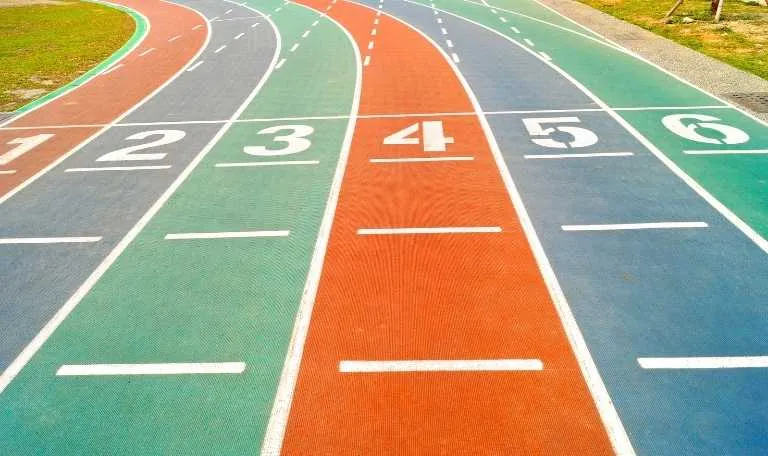
Running Track System Reconstruction
If the damage is broad and deep, though, you may need a track reconstruction. This entails taking up the entire surface and some of the sublayers until the construction crew reaches the first “intact” level. They may need to go all the way down to repair, replace or upgrade the drainage system. One level up, they will smooth out the earth and reinforce the base layers to like-new condition.
From the perspective of the track surface itself, this is basically a new construction. The extent (and expense) of the subsurface work depends on the condition of everything below.
If your running track needs a complete reconstruction, try our running track cost calculator to get a cost estimate.
Removal, Disposal, and Recycling of Running Tracks
Tracks have 30,000-50,000 square feet of surface area. That’s a lot of rubber to dispose of, so be sure to talk with the construction company to ensure you understand the costs and processes of disposal. The estimate you receive from the company may or may not include disposal, and you’ll want to know this before you begin work.
You may also be particularly interested to know what they will do with the track after they haul it away. For economic and environmental reasons, recycling options are proliferating. Many times, this involves grinding up the surface so it can be used as the basic material for other sports facility surfaces. Today’s Division I track is tomorrow’s indoor rec center multi-purpose room. Recycling tracks cuts down on raw material usage and waste, which checks the box on several key goals.

How to Avoid Damage and Extend the Lifespan of Your Running Track?
Any level of repair will force you to limit access to the track and reach for the department checkbook. The re-opening is a good time to remind people of the importance of observing the rules of your track in order to keep it in good condition.
The track is there to be used, but you may need to limit access to your students or members. You should also ensure that they are aware of the appropriate footwear for the track: track spikes are OK, but football cleats are not.
All users have a part in keeping the track clean. Basic debris and trash can reduce the track’s lifespan by contaminating the rubber, being an abrasive against the surface, and facilitating plant or bacterial growth. Regular sweeping and cleaning can have a significant impact on the track’s health and lifespan, along with attention to proper usage patterns.
Running Track Resurfacing Companies
Our cost calculator for track repair and resurfacing will give you a valuable starting point to determine what course you should take. We work with many of the most respected companies in track and sport surface construction, and we can introduce you to them if you’d like upon getting your quote for the scope of work.



